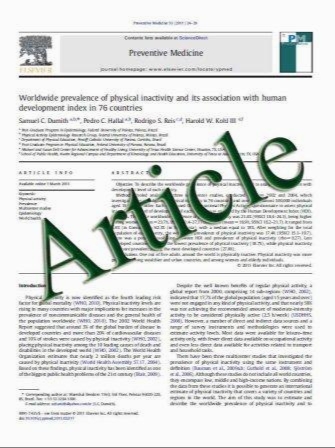High signal in bone marrow at diffusion-weighted imaging with body background suppression (DWIBS) in healthy children
- نوع فایل : کتاب
- زبان : انگلیسی
- مؤلف : Lil-Sofie Ording Müller & Derk Avenarius & Øystein E. Olsen
- چاپ و سال / کشور: 2010
Description
Background In our experience, diffusion-weighted imaging with body background suppression (DWIBS) is hard to interpret in children who commonly have foci of restricted diffusion in their skeletons unrelated to pathology, sometimes in an asymmetrical pattern. This raises serious concern about the accuracy of DWIBS in cancer staging in children. Objective To describe the signal distribution at DWIBS in the normal developing lumbar spine and pelvic skeleton. Materials and methods Forty-two healthy children underwent an MR DWIBS sequence of the abdomen and pelvis. An axial short-tau inversion-recovery (STIR) echo-planar imaging (EPI) pulse sequence was used. Two radiologists did a primary review of the images and based on these preliminary observations, separate scoring systems for the lumbar spine, pelvis and proximal femoral epiphyses/ femoral heads were devised. Visual evaluation of the images was then performed by the two radiologists in consensus. The scoring was repeated separately 2 months later by a third radiologist. Restricted diffusion was defined as areas of high signal compared to the background. Coronal maximum intensity projection (MIP) reformats were used to assess the vertebral bodies. For the pelvis, the extension of high signal for each bone was given a score of 0 to 4. Cohen’s Kappa interobserver agreement coefficients of signal distribution and asymmetry were calculated. Results All children had areas of high signal, both within the lumbar vertebral bodies and within the pelvic skeleton. Three patterns of signal distribution were seen in the lumbar spine, but no specific pattern was seen in the pelvis. There was a tendency toward a reduction of relative area of high signal within each bone with age, but also a widespread interindividual variation. Conclusion Restricted diffusion is a normal finding in the pelvic skeleton and lumbar spine in children with an asymmetrical distribution seen in 48% of normal children in this study. DWIBS should be used with caution for cancer staging in children as this could lead to high numbers of false positive findings or even unjustified upstaging.
Pediatr Radiol (2011) 41:221–226 DOI 10.1007/s00247-010-1774-8 Received: 16 December 2009 / Revised: 28 May 2010 / Accepted: 30 May 2010 / Published online: 23 July 2010


